Recent Articles
Popular Makes
Body Types
2017 Ford Fusion Hybrid Road Test and Review
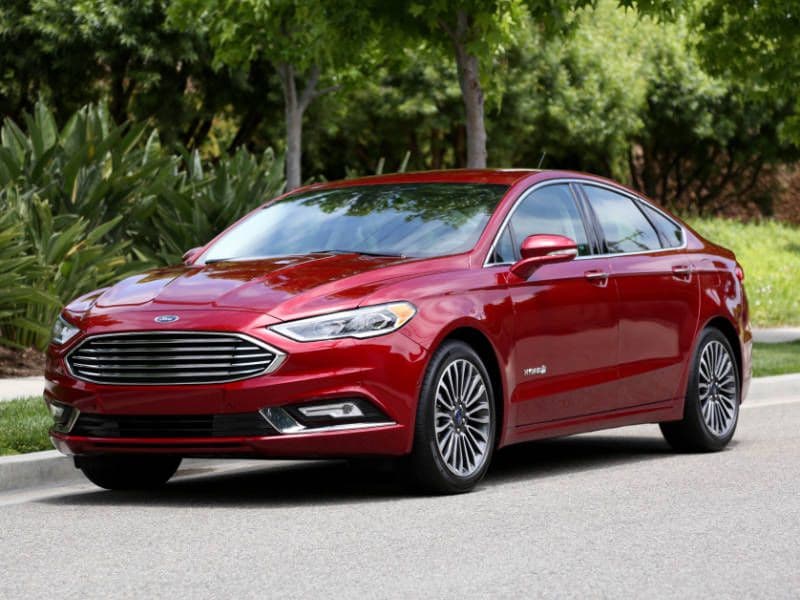
2017 Ford Fusion Hybrid front 3 4 ・ Photo by Miles Branman
Technology changes at a tremendous pace. But as fast as consumer tech advances, the automotive industry moves at a relative crawl.
There are many good reasons for slow progress – tight regulations, the intricacy of vehicle systems, and resistance to lifestyle change being among the most common – yet we’re constantly told that an automotive revolution is just around the corner. Alas, driverless tech remains flawed, hydrogen fuel cell infrastructure is limited, and electric vehicles are still creeping into the marketplace. Change is indeed coming; it’s just not here yet.
So where does that leave those who seek efficient commuting without compromise? Traditional gas-electric hybrids may not have the buzz of emerging alternative energy powertrains, but they are undeniably efficient and require no change in lifestyle to own and operate.
Let's take a look at the 2017 Ford Fusion Hybrid, and see where it stands in the automotive revolution.
What’s New For 2017
The 2017 Ford Fusion Hybrid gains an updated powertrain, new interior technology, and refreshed exterior styling to keep pace with a tough field of midsize hybrid sedans. A new range-topping Platinum trim joins the Fusion model line, with higher quality interior materials, unique design touches, and a heftier price tag.

Photo by Miles Branman
Exterior Design
Much of the 2016 model year Fusion’s design carries over, including its fastback roofline and sleek body panels. At the front, a narrower and wider corporate grill sits between piercing LED headlights. Out back, a horizontal chrome bar connects restyled LED taillights. Though exterior tweaks are modest, the Fusion remains one of the most attractive midsize sedans on the market, upstaged only by the curvaceous Mazda6. Many are quick to mock the midsize sedan sector, but in truth, it is one of the most competitive segments, demanding aesthetic appeal. The Fusion has played a big role in redefining the segment with eye-catching looks.

Photo by Miles Branman
Interior Comfort
Inside, the 2017 Fusion Hybrid offers a quiet, comfortable setting to cover any number of miles. A drive selector dial replaces the traditional center-mounted stalk, improving storage and cup holder size. While some of these new dials can be frustrating to operate, Ford’s unit turns fluidly and notches confidently into each gear. Our Titanium trim tester is equipped with premium leather seats that may not be as supple as those in the Chevrolet Malibu Hybrid, but are well-cushioned and supportive. The five-passenger 2017 Fusion offers excellent head and legroom for four full-size adults. In motion, the Fusion hybrid keeps most road and wind noise from entering the cabin, giving the impression of quality. Due to the position of the lithium-ion battery behind the rear seats, trunk volume is limited to 12 cubic feet. Further, remaining storage space isn’t perfectly usable thanks to a somewhat awkward trunk shape.
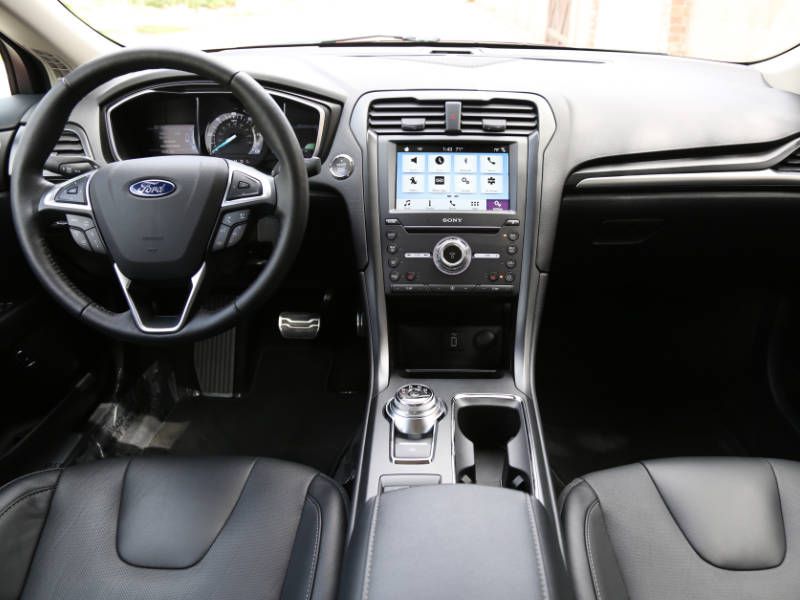
Photo by Miles Branman
Powertrain and Fuel Economy
The 2017 Ford Fusion Hybrid is powered by a 2.0-liter Atkinson cycle 4-cylinder and permanent magnetic synchronous AC electric motor linked to a 1.4-kWh lithium-ion battery pack. 188 hp and 129 lb-ft of torque are sent to the front wheels via an electric CVT (continuously variable automatic transmission). With changes to the ECU and electric motors, the Fusion Hybrid behaves more like a traditional sedan at speed, with little indication that the vehicle has transitioned from electric to gas power. Off the line, electric torque helps the Fusion Hybrid get a jump on traffic. Mid-range power is limited, however, necessitating some extra planning to make a pass or get up to highway speeds. Though we’d prefer a bit more pep, hybrid sedans aren’t exactly renowned for their straight-line speed. The 2017 Fusion Hybrid is rated at 43 city and 41 highway mpg, for a combined rating of 42 mpg. These figures are average for the segment. Ford also offers a plug-in hybrid Fusion Energi for those who prefer short trips on electricity alone.
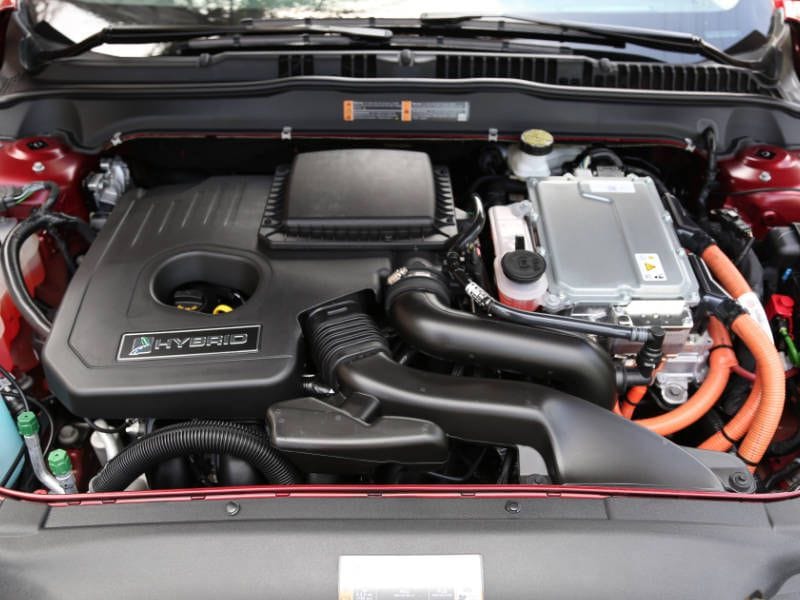
Photo by Miles Branman
Driving Dynamics
While the Fusion Hybrid may not impress with straight-line speed, it handles with confidence. At 3,700 pounds, the Fusion Hybrid is among the heaviest in its class, yet it masks its weight with stability and limited body roll while cornering. Steering response is immediate, though wheel movement feels unnecessarily difficult – as if Ford added artificial weight to mimic communication. At modest speeds, the Fusion Hybrid’s brakes respond predictably; like the powertrain’s seamless transition between gas and electric power, the regenerative to friction braking hand-off is imperceptible. However, at low speeds, the regenerative function creates a thin line between all-or-nothing braking. After a few days with the car, we could work around the sensitivity, but it never quite felt natural.
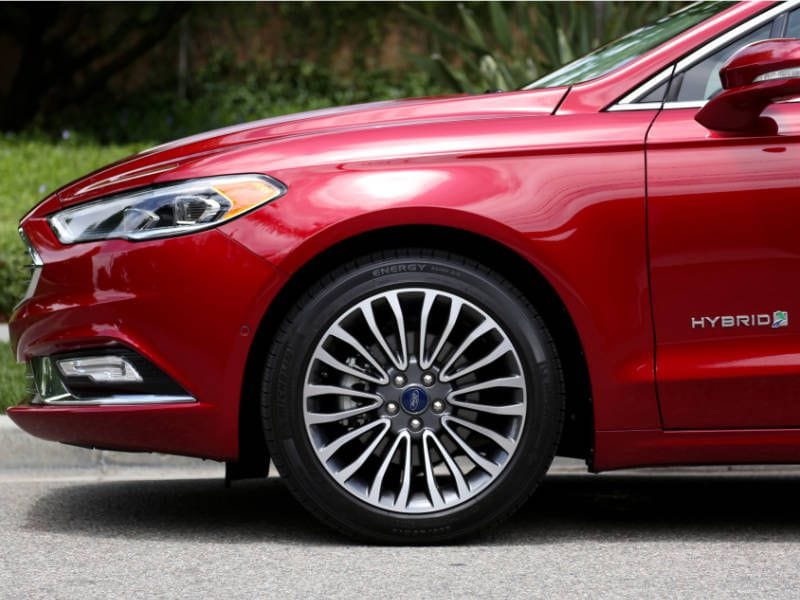
Photo by Miles Branman
Infotainment, Displays and Safety
The highlight of Ford’s interior technology is a new Sync3 infotainment system. While the old system boasted eye-catching visuals, it proved overly complex and slow. Sync3, by comparison, is much more user-friendly and responsive. Every convenience feature is controllable through the large center monitor, and physical button redundancies offer quick adjustments for climate control and audio settings. Drivers engage with an analog speedometer and a pair of digital TFT (thin film transistor) displays. The reconfigurable monitors show telemetry information, media settings, real-time power and efficiency data, and a digital speedometer. If equipped, driver aids can be adjusted via steering wheel buttons, along with cruise control and radio functions. Ford’s voice controls are among the best in the industry; rarely does the system misinterpret a command. The 2017 Ford Fusion receives a five-star overall safety rating from the NHTSA and Top Safety Pick honor from the IIHS. Fusion Hybrids also come standard with a backup camera and parental controls for speed and volume. For an extra fee, the Fusion Hybrid can be equipped with a number of active safety technologies, including forward collision warning with automatic braking assist, lane keeping assist, adaptive cruise control, blind spot monitoring with rear cross-traffic alert, and hands-free parking assist.
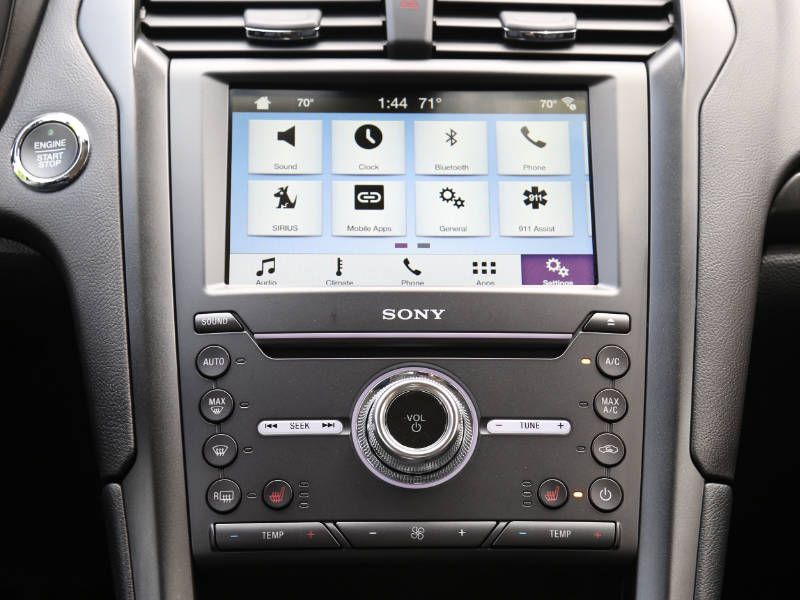
Photo by Miles Branman
Pricing and Packages
The 2017 Ford Fusion Hybrid is offered in four trims with a variety of additional packages. All prices below include destination and handling. The entry level S Hybrid starts at $26,060 and comes standard with a 4.2-inch display audio monitor, Sync voice recognition, a CD player, nine-speaker audio system, Bluetooth, a rearview camera, dual-zone automatic climate control, and the MyKey parental controls. The $26,865 SE Hybrid adds power-adjustable front seats and Sirius XM radio. SE-level packages include the Luxury package ($2,995) with leather upholstery, heated front seats, and remote keyless entry, the Technology package ($995) with an 8-inch touch screen, Sync3 infotainment, rear parking sensors, and an 11-speaker stereo. The Driver Assist package ($1,575) adds a heated steering wheel, blind spot monitoring, rear cross-traffic alert, lane keep assist, rain-sensing wipers, and remote vehicle access. For more style and equipment, the Titanium trim ($31,395) boasts leather seating, heated front chairs, keyless entry, remote start, a 12-speaker Sony audio system, rear parking sensors, and Sync3 infotainment with an 8-inch touch screen, Apple CarPlay, and Android Auto. Topping the Fusion Hybrid range is the new Platinum trim ($37,895) that offers Venetian leather seats, ventilated front seats, a heated steering wheel, moonroof, navigation, and all of Ford’s available active safety goodies.
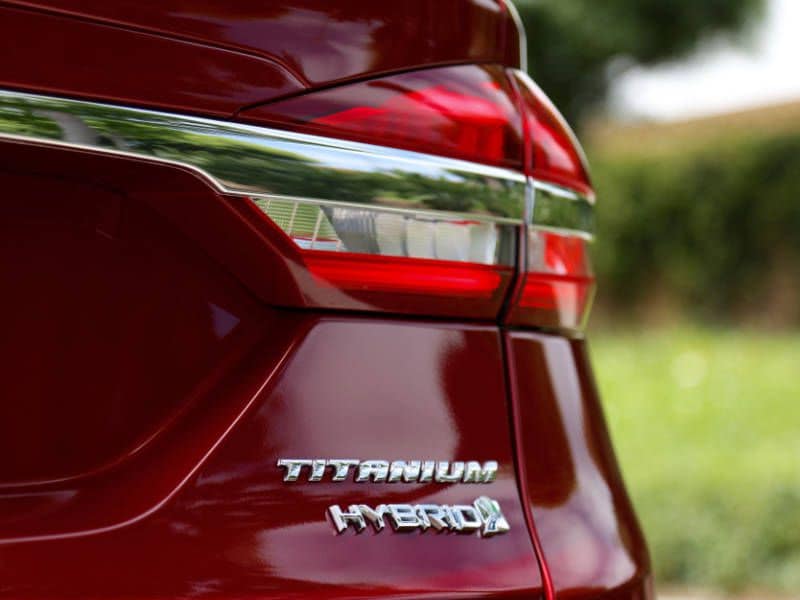
Photo by Miles Branman
Highs and Lows
Highs: - Refined gas-electric powertrain - Stable handling - Handsome, freshened design - User-friendly technology Lows: - Heavy steering - Sensitive regen brakes at low speeds

Photo by Miles Branman
Competition
These days, there’s no shortage of midsize hybrid options. The 2017 Fusion Hybrid faces off against the Toyota Camry Hybrid ($26,790), Chevrolet Malibu Hybrid ($27,875), Honda Accord Hybrid ($29,605), Kia Optima Hybrid ($25,995), and Hyundai Sonata Hybrid ($26,000). While every one of the Fusion’s rivals develops more power (especially the 212hp Honda Accord Hybrid), only the Malibu Hybrid and Accord Hybrid offer higher combined mpg – 46 for the Chevy and 48 for the Honda.

Photo by Miles Branman
Our Take
Despite being at a clear performance disadvantage, the 2017 Ford Fusion Hybrid is arguably the most attractive model in its class. It boasts excellent interior technology, carries a price tag at the low-end of its segment, and matches most of competitors' mpg estimates.
Choosing the right midsize hybrid for you depends on your priorities. If you value efficiency above all, the Malibu Hybrid or Accord Hybrid is the right fit. If your budget is constrained, the Sonata Hybrid or Optima Hybrid include many standard features at a compelling price. If, however, you want a refined sedan (inside and out) with strong mpg figures, the Fusion Hybrid is a perfect match.
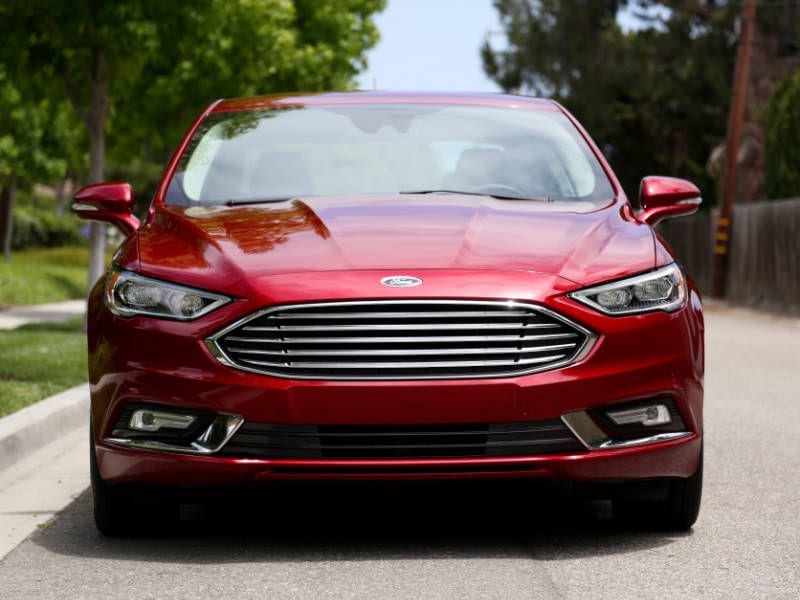
Photo by Miles Branman